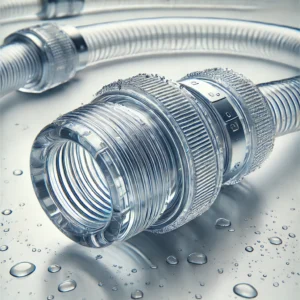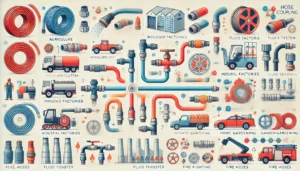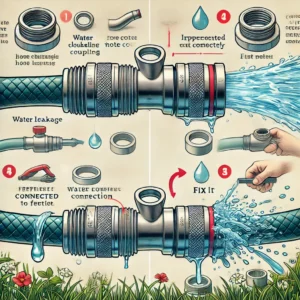A Deep Dive into Hose Couplings: Your Complete Overview to Understanding Types, Products, and Applications
Hose coupling, likewise known as hose installations, is an important part of any system that includes the transfer of fluids, gases, or other products. Whether you’re collaborating with commercial machinery, agricultural devices, or perhaps a simple garden hose, recognizing hose couplings can make a significant distinction in efficiency, safety, and total system efficiency. In this detailed overview, we will check out the various aspects of hose couplings, including their types, products, mixes with other products, usual applications, and maintenance suggestions. With thorough descriptions, charts, and actionable understandings, this short article will work as the utmost resource for any individual looking for a comprehensive understanding of hose coupling.
What Are Hose Couplings?

Hose couplings are connectors that connect hoses to various other hoses, equipment, or fittings. Their main function is to ensure a protected and leak-free link, promoting the transfer of liquids, gases, or various other substances under various pressures and temperature levels.
Hose couplings are designed to accommodate various needs, consisting of:
- Quick and easy assembly and disassembly.
- Resistance to high pressures and temperature levels.
- Compatibility with various products and compounds.
- Durability in harsh settings.
Why Are Hose Couplings Important?
The significance of hose coupling lies in their capacity to:
- Avoid Leaks: Ensures a tight seal to avoid loss of liquids or gases.
- Improve Safety: Reduces the danger of crashes as a result of leakages or disconnections.
- Boost Efficiency: Facilitates smooth links and smooth procedures.
- Extend System Longevity: Protects hoses and systems from damage.
- Give Versatility: Works with a variety of hoses and tools.
Common Applications of Hose Couplings:

Hose coupling is used throughout numerous sectors and applications:
Farming:
- Watering systems.
- Plant food distribution.
- Splashing devices.
Automotive:
- Gas lines.
- Brake systems.
- A/c systems.
Industrial:
- Pneumatic devices.
- Chemical transfer.
- Hydraulic systems.
Firefighting:
- Rapid links for fire hoses.
- High-pressure water distribution.
Home and Garden:
- Yard hoses.
- Pipes systems.
- Swimming pool maintenance tools.
Read About: Hose VS Hose Pipe
Types of Hose Couplings:

Hose coupling comes in different designs to match specific applications. Below is a detailed summary of one of the most usual types:
1. Quick-Connect Couplings:
Description:
- Designed for tool-free accessory and detachment, these coupling guarantee swift and easy connections.
Features:
- Push-to-connect mechanisms.
- Readily available in solitary or double shut-off alternatives.
Applications:
- Pneumatically-driven systems.
- Hydraulic devices.
- Garden hoses.
2. Camlock Couplings:
Description:
- These couplings use cam-and-groove fittings to create a secure and leak-proof link.
Attributes:
- Quick locking and unlocking with levers.
- Compatible parts throughout brand names (standardized dimensions).
Applications:
- Industrial fluid transfer.
- Agricultural tools.
- Chemical taking care of systems.
3. Threaded Couplings:
Description:
- These couplings connect using screw threads, supplying a durable and safe fit.
Functions:
- Available in NPT, BSP, and other thread requirements.
- High-pressure resistance.
Applications:
- Pipes systems.
- Gas lines.
- Oil transfer systems.
4. Push-On Couplings
Summary:
- These couplings depend on a tight fit over the hose, removing the need for clamps or kinking.
Features:
- Easy setup.
- Suitable for low-pressure systems.
Applications:
- Airline.
- Vacuum lines.
5. Flanged Couplings:
Description:
- Equipped with flanges for bolted links, these combining’s are perfect for large-diameter hoses.
Features:
- High-strength connections.
- Adjustable sizes.
Applications:
- Industrial piping.
- Marine applications.
6. Bayonet Couplings:
Summary:
- Features a twist-and-lock device for safe attachment.
Features:
- Compact and easy to use.
- Immune to accidental disconnection.
Applications:
- Fuel delivery systems.
- Medical devices.
7. Barbed Couplings
Summary:
- These couplings feature ridges or barbs that grasp the inside of the hose, making sure of a safe link.
Attributes:
- Easy layout.
- Budget-friendly and versatile.
Applications:
- Low-pressure liquid systems.
- Small-scale irrigation systems.
| Type | Key Feature | Best Use Case |
|---|---|---|
| Quick-Connect | Tool-less attachment | Pneumatic and hydraulic systems |
| Camlock | Cam-and-groove mechanism | Industrial fluid transfer |
| Threaded | Screw threads | Plumbing and gas systems |
| Push-On | No clamps required | Low-pressure air hoses |
| Flanged | Bolted connection | Large-diameter industrial hoses |
| Bayonet | Twist-lock mechanism | Fuel delivery |
| Barbed | Ridges for grip | Low-pressure fluid systems |
The selection of material for hose coupling depends upon aspects such as pressure, temperature, and the nature of the moved product.
Below is a failure of typically made use of materials:
1. Brass
Benefits:
- Long-lasting and corrosion-resistant.
- Appropriate for high-pressure systems.
Applications:
- Plumbing.
- Yard hoses.
- Fuel systems.
2. Stainless Steel :
Benefits:
- High toughness and rust resistance.
- It can stand up to severe temperatures and pressures.
Applications:
- Industrial and chemical processes.
- Food-grade systems.
3. Aluminum:
Benefits:
- Lightweight and corrosion-resistant.
- Cost-effective for low-pressure applications.
Applications:
- Water transfer.
- Short-term piping.
4. Plastic:
Benefits:
- Lightweight and budget-friendly.
- Resistant to many chemicals.
Applications:
- Home use.
- Light industrial systems.
5. Carbon Steel:
Advantages:
- Solid and cost-efficient.
- Ideal for high-pressure environments.
Applications:
- Hydraulic systems.
- Commercial tools
| Material | Advantages | Common Applications |
| Brass | Durable, corrosion-resistant | Plumbing, garden hoses |
| Stainless Steel | High strength, rust-resistant | Industrial and chemical systems |
| Aluminum | Lightweight, cost-effective | Water transfer |
| Plastic | Affordable, chemical-resistant | Home use |
| Carbon Steel | Strong, cost-effective | High-pressure systems |
Secret Factors in Selecting Hose Couplings:
- Compatibility: Ensure the coupling fits the hose dimension and application requirements.
- Stress Rating: Select couplings created to manage your system’s stress array.
- Temperature Range: Choose materials that can hold up against the operational temperature level.
- Ecological Conditions: Opt for corrosion-resistant products in extreme atmospheres.
- Reduce of Use: For frequent links, quick-connect couplings are optimal.
Upkeep Tips for Hose Couplings Routine inspection for wear and damage:
- Regular inspection for wear and damage.
- Cleansing to remove particles and contaminants.
- Proper storage space in dry settings.
- Prompt substitute of damaged parts.
- Lubrication of moving components to make certain smooth operation.
Common Challenges with Hose Couplings and Solutions:

Leakages at Connections:
- Reason: Worn-out seals or improper fitting.
- Option: Replace seals and ensure appropriate installment.
Rust:
- Create: Exposure to rough chemicals or atmospheres.
- Remedy: Use corrosion-resistant materials like stainless steel or brass.
Stress Drops:
- Reason: Incompatible coupling dimensions or damaged hoses.
- Solution: Use properly sized couplings and check hoses regularly.
Problem is Connection:
- Cause: Dirt or particles in the coupling system.
- Solution: Clean and lubricate the coupling parts.
FAQs About Hose Couplings:
Q1: What is the distinction between a hose coupling and a hose clamp?
A: Hose coupling connects hoses to tools or various other hoses, while hose clamps safe and secure hoses to coupling or installations.
Q2: How do I choose the right coupling for my application?
A: Consider elements like pressure ranking, product compatibility, temperature range, and simplicity of use.
Q3: Can I make use of the very same coupling for gas and fluid transfer?
A: Not always. Ensure the coupling is particularly rated for the designated compound to avoid leaks or damage.
Q4: How often should I replace my hose couplings?
A: Inspect regularly and replace coupling showing indicators of wear, corrosion, or damage.
Q5: Are quick-connect combining’s appropriate for high-pressure systems?
A: Yes, yet just if they are specially designed for high-pressure applications.
conclusion:
By comprehending hose coupling thoroughly, you can make informed decisions for your particular requirements. From choosing the ideal kind and material to maintaining and fixing, this overview outfits you with whatever is required to understand hose couplings. Whether you’re a specialist or a DIY fanatic, a well-chosen and well-kept coupling guarantees security, efficiency, and durability in any application.